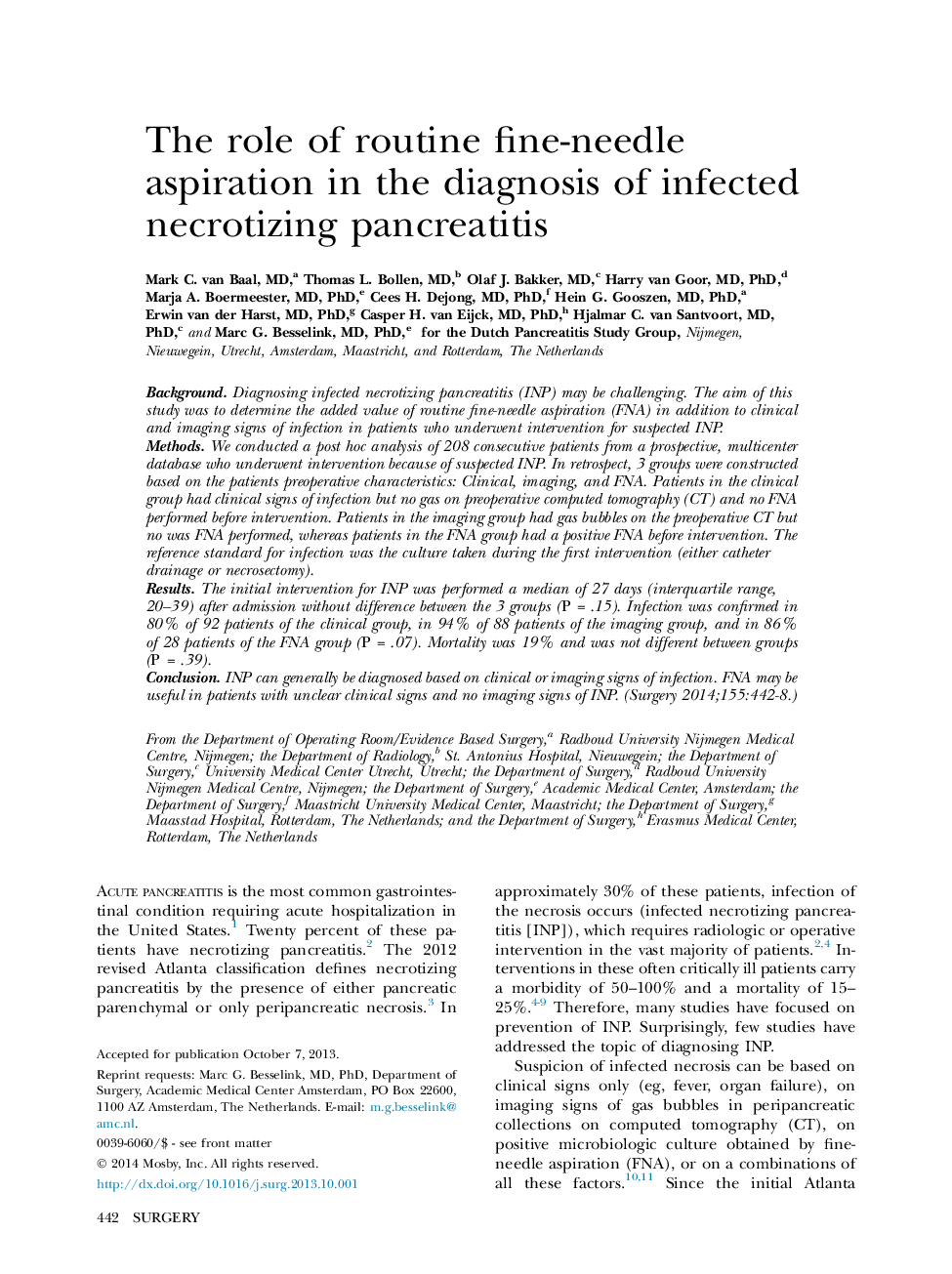| Article ID | Journal | Published Year | Pages | File Type |
|---|---|---|---|---|
| 6255574 | Surgery | 2014 | 7 Pages |
BackgroundDiagnosing infected necrotizing pancreatitis (INP) may be challenging. The aim of this study was to determine the added value of routine fine-needle aspiration (FNA) in addition to clinical and imaging signs of infection in patients who underwent intervention for suspected INP.MethodsWe conducted a post hoc analysis of 208 consecutive patients from a prospective, multicenter database who underwent intervention because of suspected INP. In retrospect, 3 groups were constructed based on the patients preoperative characteristics: Clinical, imaging, and FNA. Patients in the clinical group had clinical signs of infection but no gas on preoperative computed tomography (CT) and no FNA performed before intervention. Patients in the imaging group had gas bubbles on the preoperative CT but no was FNA performed, whereas patients in the FNA group had a positive FNA before intervention. The reference standard for infection was the culture taken during the first intervention (either catheter drainage or necrosectomy).ResultsThe initial intervention for INP was performed a median of 27 days (interquartile range, 20-39) after admission without difference between the 3 groups (P = .15). Infection was confirmed in 80% of 92 patients of the clinical group, in 94% of 88 patients of the imaging group, and in 86% of 28 patients of the FNA group (P = .07). Mortality was 19% and was not different between groups (P = .39).ConclusionINP can generally be diagnosed based on clinical or imaging signs of infection. FNA may be useful in patients with unclear clinical signs and no imaging signs of INP.
